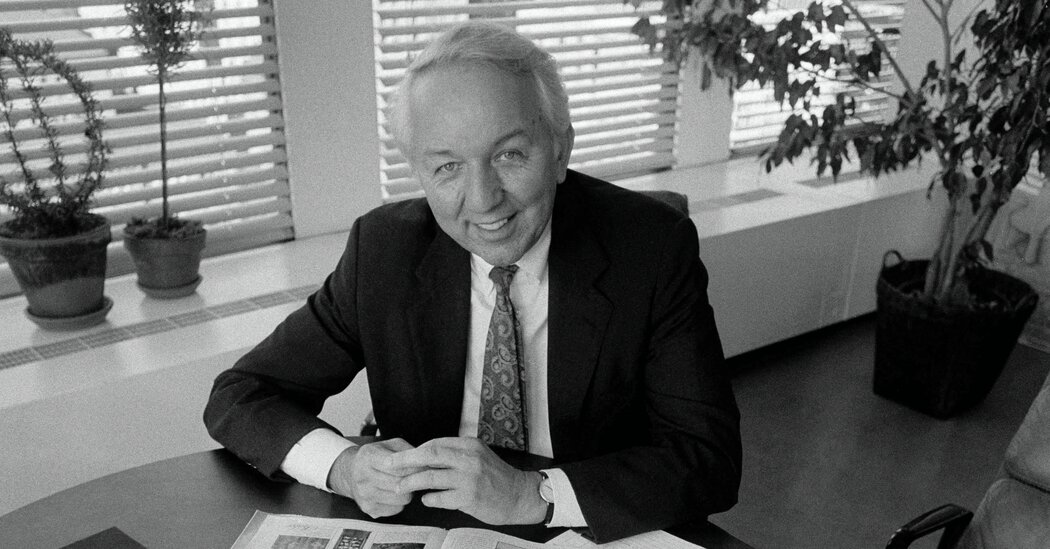Employers Can Now Enroll Workers in Some Emergency Savings Accounts
Starting this year, a federal law allows employers to enroll workers in emergency savings accounts that are linked to their retirement accounts. But some companies, put off by the law’s complex rules, have begun offering rainy day benefits outside workplace retirement plans.
“I do think there is tremendous interest in emergency savings programs,” said Matt Bahl, vice president and head of workplace financial health at the Financial Health Network, a nonprofit that promotes financial well-being. “Having access to liquid cash can greatly reduce levels of financial stress.”
The Employee Benefit Research Institute, a nonprofit, found that about three-fourths of large employers (those with 500 or more workers) offered or planned to offer hardship or emergency assistance programs to workers last year. Of those, about a third said they offered an emergency savings account feature and another third planned to do so in the next year or two.
But while the law, known as Secure 2.0, has helped draw attention to the need for rainy day savings, its rules for setting up emergency accounts within retirement plans are “clunky,” Mr. Bahl said. For instance, only workers making under a certain income limit ($155,000 for 2024) may participate, and their emergency savings are limited to $2,500, though employers can set lower ceilings. And though employers can help with contributions, they must deposit any match into the worker’s retirement account — not the emergency savings account.
While employers may eventually choose to offer such “sidecar” savings accounts, stand-alone emergency savings programs are already available from financial technology start-ups and established retirement plan administrators. With emergency savings offerings, “it’s really important to be broadly available and simple to use,” said Emily Kolle, a vice president who oversees the emergency savings offering from Fidelity Investments, one of the largest retirement plan administrators.
Emergency savings — a cash cushion available in the event of a job loss or surprise expenses like car repairs or medical bills — are a concern for many Americans. In a recent survey by the financial site Bankrate, about a third said they would have to borrow to cover a $1,000 unexpected expense. And almost a quarter of consumers have no savings set aside for emergencies, according to the Consumer Financial Protection Bureau.
The Secure 2.0 law has two main provisions aimed at helping workers cover surprise expenses. First, it allows employers to automatically enroll workers in emergency savings plans tacked on to their 401(k) accounts. (Stand-alone account offerings, in contrast, can’t sign up workers by default; employees must choose to enroll.)
Second, employers may let workers withdraw up to $1,000 a year, without penalty, from their retirement accounts to cover surprise expenses. (Employers may already offer “hardship” withdrawals from retirement plans, but workers typically owe a 10 percent tax penalty if they are younger than 59½, in addition to ordinary income tax on the amount withdrawn.)
The Plan Sponsor Council of America, a nonprofit group representing employers, found tepid interest in the Secure 2.0 options. In a recent survey of council members, only about 2 percent said they were interested in offering both the savings and withdrawal options. Half said they weren’t interested in either option, while more than a third said they weren’t sure.
Some employers said in written comments in the survey that the time and cost necessary to offer the provisions weren’t worth their value to employees. Others objected to linking rainy day and retirement savings — even though one rationale for offering emergency savings accounts is to reduce workers’ need to tap retirement funds to manage personal financial difficulties.
Tom Armstrong, vice president of customer analytics and insight at the financial services firm Voya Financial, said its data showed that employees lacking adequate emergency savings were 13 times as likely to take a “hardship” withdrawal from their retirement account and 30 percent more likely to decrease their retirement contributions.
Brian Graff, chief executive of the American Retirement Association, an umbrella group that includes the employers’ plan sponsor council, said many companies and plan administrators had focused on mandatory aspects of the hefty Secure 2.0 law — like a provision requiring improved access to retirement plans for long-term, part-time workers. They haven’t had time yet to fully consider whether to adopt other optional offerings, like emergency savings, he said. “It’s early stages.”
At the same time, some employers have started offering rainy day savings tools outside their workplace retirement plans. Details can vary by employer and provider.
In January, for instance, Whole Foods Market began offering an emergency savings program through Fidelity. Workers can have funds deposited through payroll deductions and withdraw them when needed. It joined companies like Delta Air Lines, which began offering an emergency savings program through Fidelity in January 2023.
Employees who register for Delta’s program open a cash management account at Fidelity. After completing the required financial coaching, they receive a $750 deposit from Delta. The airline will then match up to $250 in employee contributions. As of last fall, 21,500 employees had participated, a Delta spokesman said.
Here are some questions and answers about emergency savings:
What is a reasonable goal for an emergency savings fund?
That depends on your financial situation. A common rule of thumb is to save at least three months of living expenses, but that can seem daunting for some people. Research shows that even smaller savings balances can help people avoid turning to risky alternatives, like high-interest credit cards. America Saves, an initiative of the Consumer Federation of America, recommends aiming for $500 to start.
Is it better to save lump sums for emergencies or to save a little bit at a time?
Either way — or a combination of both — can work, depending on what’s best for your situation. Tax time is here, and many filers get a significant refund. The average federal refund last year was just under $3,200, the Internal Revenue Service reported. Setting aside a chunk of your refund in a savings account can help start your emergency fund.
Do I have to participate in a formal program to have money from my paycheck sent to a savings account?
Probably not. Most employers offer electronic deposit and allow “split deposits,” in which you direct part of your paycheck to automatically go to a separate savings account. Ask your payroll department. You’ll typically need to fill out a request form with your bank account number. Alternatively, banks and credit unions and many budgeting apps offer automatic transfers from your checking account to a savings account.


